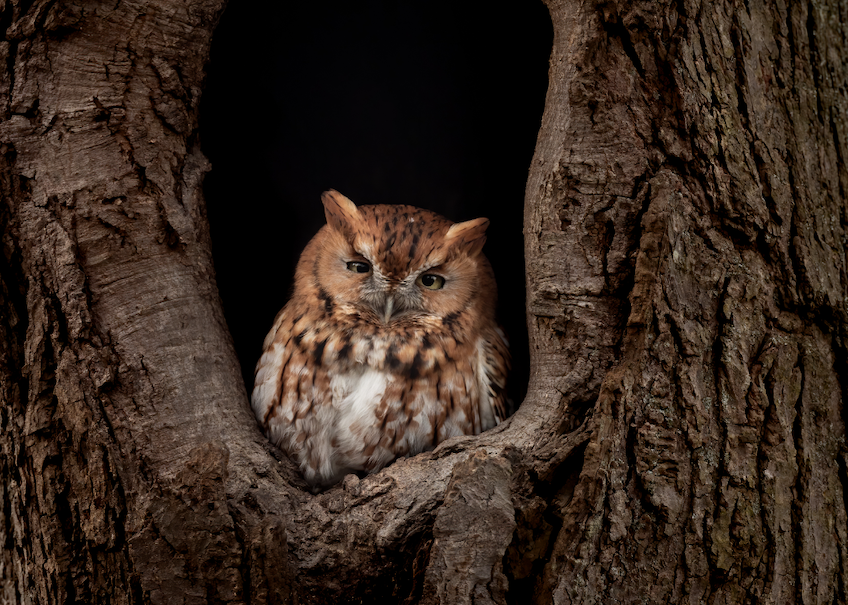Scientific Name: Megascops kennicottii
– Family: Strigidae
– Order: Strigiformes
Common Names
– Western Screech Owl
Description
Western Screech Owls are small, compact owls with stocky bodies and large heads without ear tufts. They typically measure 7.5 to 10 inches in length with a wingspan of about 18 to 24 inches. Their plumage is a mottled pattern of gray, brown, and white, which aids in camouflage against tree bark. The facial disc is well defined, and they have yellow eyes.
Distribution and Habitat
This owl is found along the western regions of North America, from Alaska to Mexico. They inhabit a range of environments, including deciduous and mixed forests, along rivers, in urban parks, and in suburban areas where trees are plentiful.
Behavior
Western Screech Owls are nocturnal and are most active at night. They roost during the day in tree cavities or nest boxes. Their vocalizations include a series of accelerating whistles and their characteristic screech. They are territorial and solitary outside of the breeding season.
Diet
Their diet consists mainly of insects, small mammals, small birds, and occasionally fish and amphibians. They hunt from perches, dropping down on prey spotted with their excellent night vision.
Reproductive Information
Breeding occurs once a year, with egg-laying typically starting in early spring. Females lay 3-4 eggs in a tree cavity or a nest box. The female incubates the eggs for about 26 days, and the young fledge around 30 days after hatching.
Conservation Status
The Western Screech Owl is classified as Least Concern by the IUCN. However, habitat loss and competition for nesting sites pose challenges in some areas.
Ecological Role
As predators, they help control populations of insects and small vertebrates, playing an essential role in maintaining ecological balance.
Research and Observation
Research focuses on their adaptability to urban environments, breeding habits, and diet composition, providing insights into their ecological needs and challenges.
Management Strategies
Conservation efforts include preserving and managing forest habitats, monitoring populations, and providing artificial nest boxes in areas with limited natural nesting sites.
How to Attract Western Screech Owls to Your Property
1. Install Owl Nest Boxes: Provide suitable nest boxes in quiet areas to encourage nesting. These boxes should be placed well above ground in a sheltered location.
2. Preserve Mature Trees: Maintaining old trees with cavities can provide natural nesting and roosting sites for these owls.
3. Maintain a Varied Landscape: Including a mix of trees, shrubs, and open spaces can help support a diverse prey base for the owls.
4. Use Outdoor Lighting Sparingly: Reducing light pollution helps maintain the natural behavior patterns of nocturnal animals like screech owls.
5. Avoid Pesticides: Minimizing pesticide use helps maintain healthy insect and small mammal populations, which are crucial for owl diets.
By creating a welcoming environment with the necessary resources such as shelter, food sources, and reduced human disturbance, you can encourage Western Screech Owls to visit or reside on your property.
Click “Buy a Nestbox” below to start making your property a suitable habitat for Western Screech Owls


